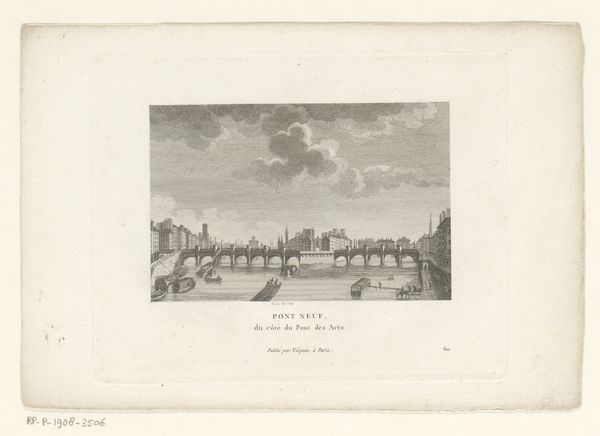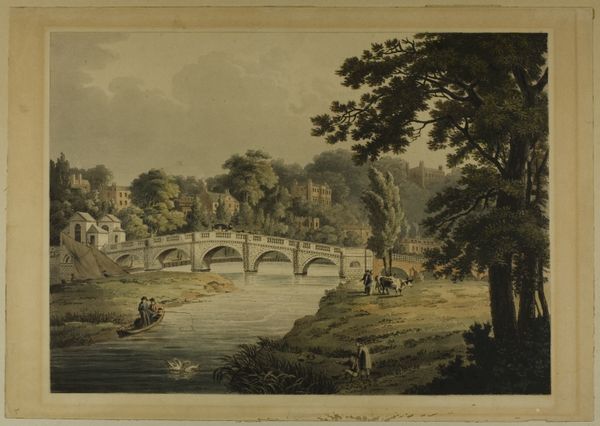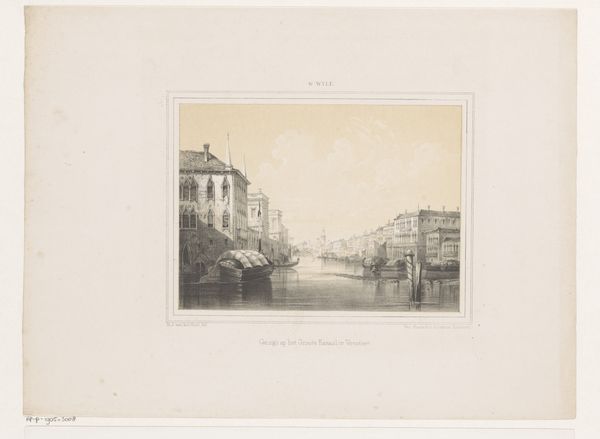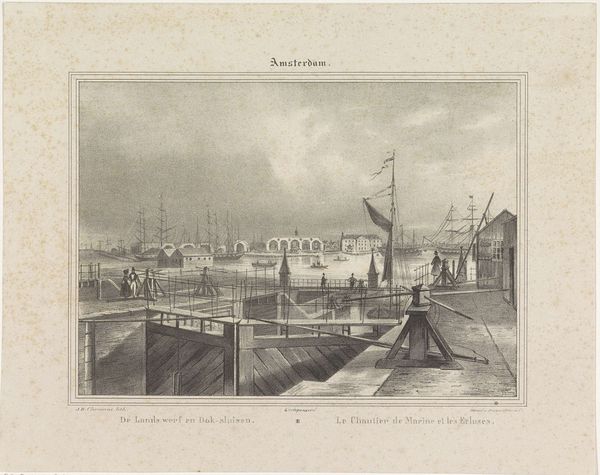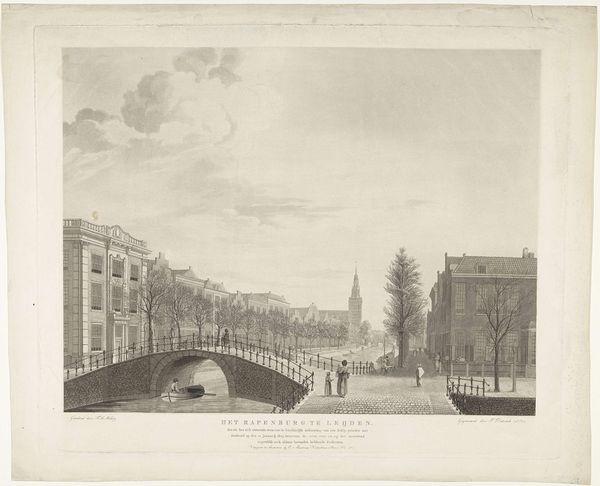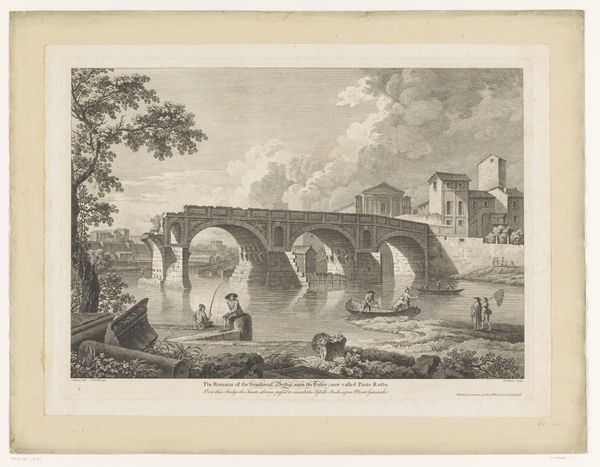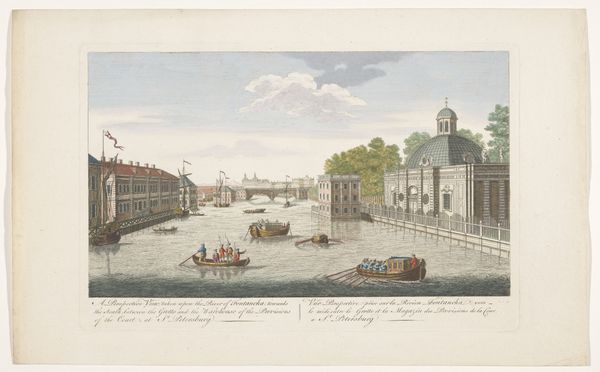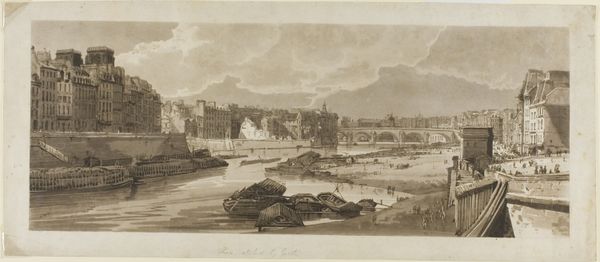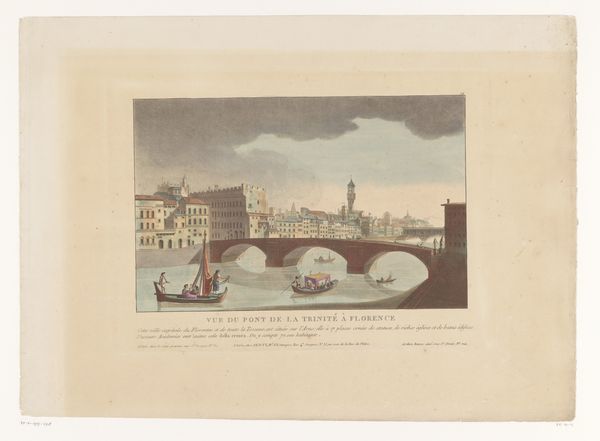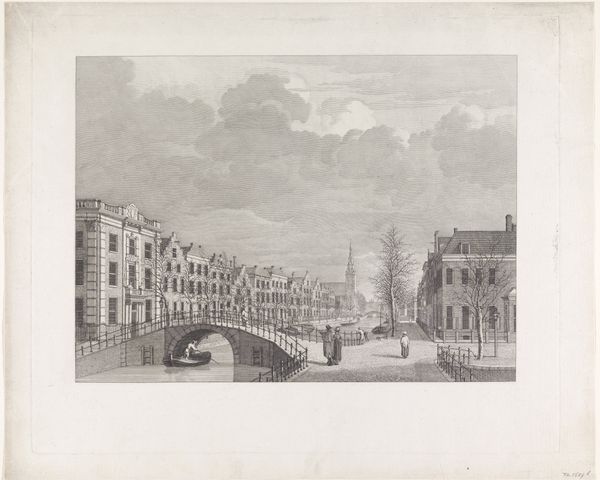
aquatint, drawing, print, etching, paper
#
aquatint
#
drawing
#
water colours
# print
#
etching
#
paper
#
romanticism
#
cityscape
Copyright: Public Domain
Curator: Here we have a print titled "Paris, Le Pont-au-Change," by John Gendall. It's an aquatint and etching on paper, offering a captivating view of a Parisian cityscape. Editor: It strikes me immediately as quite dramatic. The heavy, almost bruised clouds dominate the sky, creating a sense of looming grandeur over the more delicate architecture below. Curator: Precisely. Note the tonal gradations achieved through the aquatint technique. Gendall masterfully employs it to build atmosphere and a palpable sense of depth within the composition. See how the dark clouds contrast with the lighter washes of the water below, framing the structural components below? Editor: And that dark structure centered in the river. What is it? It's rather imposing, even ominous. Curator: That would be one of the buildings once built directly atop the Pont-au-Change itself. Consider how bridges, historically, were not just transit points, but integrated aspects of city life, dense with commerce and habitation. It speaks to a time when the city was both more integrated and, in a way, more chaotic than what we typically experience today. Editor: It's potent imagery. The bridge as a support, but also weighed down, almost burdened by the structures it carries. Water is of great cultural importance and depth. It suggests cycles of renewal and the transience of material structures when juxtaposed like this. What did people feel viewing this scene, I wonder? What does a river, here, communicate? Curator: Perhaps it serves as a memento mori, reminding us of the ephemeral nature of human endeavor juxtaposed against nature's persistence. Furthermore, it is essential to appreciate how Gendall used line to render both architectural and natural elements; a testament to printmaking's precision, serving also, counterintuitively, to underscore its capacity for nuanced expressive possibilities. Editor: It's a rather moody print, more introspective than celebratory of Parisian life. Considering Romanticism, the style identified in our museum records, with its emphasis on emotion, nature, and the sublime, it fits. Curator: Indeed. We can see that even in seemingly straightforward cityscape representations, underlying cultural narratives can become strikingly apparent. Editor: Absolutely, it leaves you contemplating the ever-shifting relationship between humanity and the built environment.
Comments
No comments
Be the first to comment and join the conversation on the ultimate creative platform.


